Mr. Mahipal Saran is the National Category Manager of Metro Cash and Carry India Private Ltd, who has a proven track record of Buying and Merchandising for the Retail Organization which involves dealing and negotiating with top brands.
He is a person behind many challenging tasks like analyzing business strategies, delivering sales and forecasts, managing profit and loss. He is responsible for negotiating with vendors for yearly and quarterly schemes and promotions on product lines. Expert in driving efficiency, productivity through evaluation of buying and merchandising management. He possesses good interpersonal skills and collaborative team workers specialized in areas like budgeting, data analysis, stock management.
Let’s look into the Interview with him conducted by Mr Ravdeep Singh Chadha(Editor In Chief-Auto Insider) where he shares about his journey with Metro Cash & Carry and the challenges he faced and the future growth.
Please give us a brief introduction about your company, the products you deal with and the number of years you have been into business?
I am into the retail profession for 8 years now and from the beginning, I manage the Home Improvement , Automotive segment.Metro Cash and Carry India is one of the global leaders in B2B business.
We are typically a wholesale firm, majorly dealt with food and non-food categories. In some of the European countries, we are very strong in food counters and HORECA segments specifically. Non-food is more into complementary business which caters to the needs of all the B2B businesses. A person who holds basically the business community strands. So, this is about the company.
When it comes to my experience in the retail segment, as I spent so many years in the Home Improvement/Automotive segment for the past eight years, now I focus on Lubricants and Automotive for Cars, bikes and other accessories which is a part of the entire business portfolio.
How many employees and Set of customers does Metro Cash & Carry have?
In the Indian market, we have over 1000 employees and when it comes to customers, on average we may have around 5 Million customers in India which are active customers who come day-in and day-out to buy products from Metro.
Were all these customers being the only B2B, doesn’t Metro deal with B2C?
Yes, all these customers are GST holders who have GST numbers with them. Not only the wholesalers or retail consumers but also professionals like Lawyers, doctors who hold their own clinics or college institutes who hold GST numbers to run their institutions. All these institutions are also part of our consumer list who comes and buy for the basic necessities of their institutions.
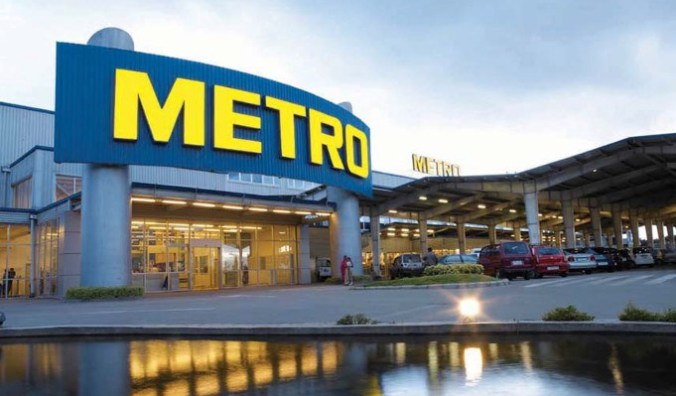
What is the turn-over of Metro, how many stores do they have and what is the aim of the company in the near future, how many stores are they planning?
Unfortunately, I would not be able to share the turn-over and other confidential stuff. If I have to talk about the stores, right now we have 27 stores in the country and we are doing pretty well wherever we are present. Fundamentally, we are very strong in B2B business. The growth path of the Company is very good in India and we are looking forward to developing many stores.
We can get a lot of B2B consumers where right now there are larger gaps in the country. As a company, we are very much geared up to develop ourselves in the Indian market.
Tell us about your professional journey?
From the day when I was recruited as a management trainee over here, the first job profile which I got was Auto Management where I was into the buying-house category called home improvement. It is basically a category that consists of all your car/bike accessories, power tools, lubricants, automotive accessories, tires, car perfumes, car furnishing, and car care. Everything related to automotive as a product was linked to this category. I am the one who handles all these for eight years and my journey has been very exciting. This industry itself is huge in terms of learning and the journey is fantastic till now. Hope it will be the same in the future as well.
What are your key highs and key lows?
Key Highs – When I took this car segment nobody was confident enough to see that it will prevail in modern retail. Basically, when a consumer thinks about it, they normally visualize about the household, textiles, footwear, apparel. In Indian retail market history, no one as a retailer has focused so much on these categories which already evolved in European and American markets where people go to modern retail to purchase their automotive stuff.
As far as my Low is concerned, we are not able to justify this as a very big segment till now in the Indian market. Because, when people see modern retail, they only link it with staples and other household stuff. They don’t link it with the services which they can get for their bike or car. So this is where we need to establish more and it is a work in progress right now.
What motivates and inspires you the most?
Retail is basically a continuous business. Every day you have to come and do things again and again also in an improvised version. In retail, whatever you do, the end result is basically on the process of how you have evolved. So, the motivation for me in retail is that every day when I come to work, I think that whatever I had done yesterday, I have to do the same better again and again. Today it must be done differently so that I can get a different result. The motivation here is Whatever you do every day, do it better again and again.
Name three people who inspired you in your life?
There are not many as three but just one who inspired and motivated me and who completely brought me into the Retail channel business, he is Mr. Gautam Puri. He was the Non-food head when I joined as an employee. He was the one who motivated me to develop this particular category. He was also confident that this particular category will definitely do very well in the Indian market. He was the one who supported me and taught me how exactly retail has to be learned. I’m still learning. He taught me how to think from the consumer perspective rather than from the company. In today’s scenario consumer is the king. I really owe him my success in the past 8 yrs of retail experience.
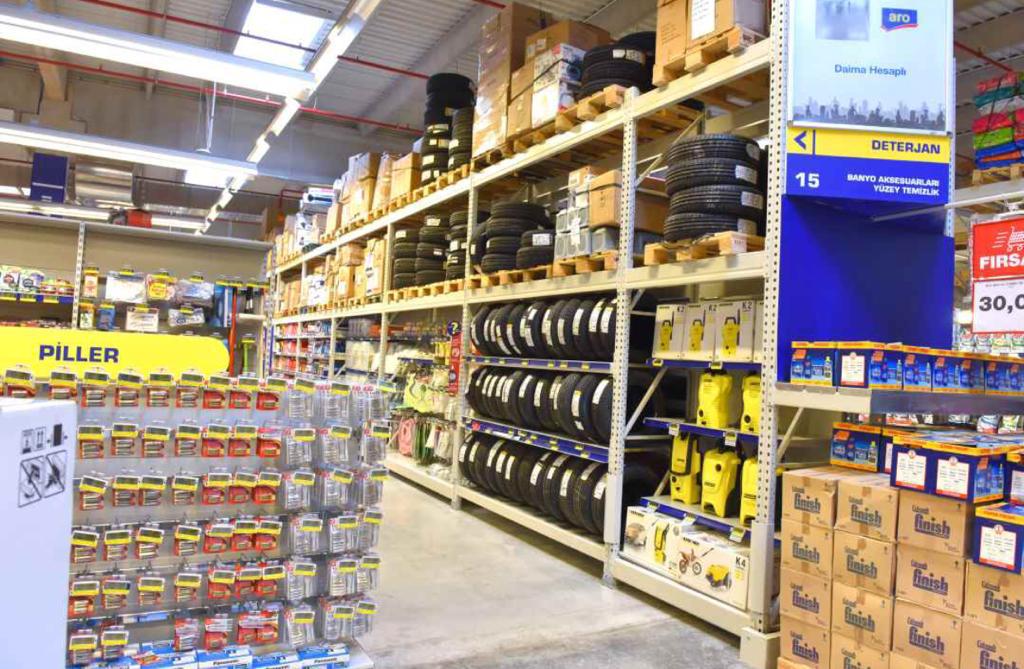
Tyres Inside Metro Store
Whenever I see you, your energy is so high. What keeps your energy level so high?
(Laughing) I think it’s the basic daily routine which I follow. Daily exercise and do whatever keeps you active the whole day. If you can give one hour to yourself in the morning and make sure you are activated for the entire day. That’s the secret.
How do you see the business in the Automotive Products/Industry till date?
Automotive as an industry is no more an Aspiration Industry for customers. If I have to ask for a car or bike in the 90’s, it was an aspiration for the people to buy their dream car or bike. But in the current scenario, buying a car/bike is not a consumer aspiration. Yes, it is a basic necessity of a consumer. It will always be a necessity for commuting and a part of their day-to-day activities. So, this industry will always boom irrespective of economic slowdown , factors that impact the industry like GST or additional manufacturing stress. Wherever there is a lead for consumers or not the industry will sustain. As far as the car and bike needs are there, obviously the automotive segment, accessories, car furnishing etc will always be on-demand.
So, even if it’s no more an aspiration, it’s a basic necessity for the consumers to commute. So, it will always be there with the consumer’s day-to-day life and people will buy these products in future.
There is a slowdown in the market. What we are seeing is that there are so many cars and vehicles in the market which require these products at least for the existing vehicles.
Yes obviously. India’s population is 1.4 billion. So, consumer needs are never-ending. If I’m a consumer who has bought a car or a bike in a year, I’ll at least spend close to 25 thousand rupees for a car and close to 5-6k for a bike for its maintenance and beautification. So, the demand will always be there. Yes, there can be a slowdown in the market due to the economic crisis but it won’t prevail for the long term, the Indian market will definitely overcome it and as an industry, it will definitely boom.
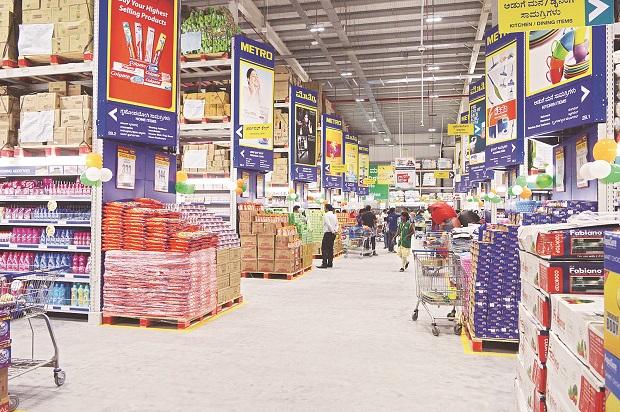
Inside Store
What are the types of products customers generally pick up? Mention the top 3-4 products in modern retail stores like Metro.
In Modern Retail consumers have limited themselves with all non-serviceable product lines. To describe in detail, when the consumer doesn’t require any fitting for it and in need of a third party to come to their home for service. Right now, modern retail is only focusing on non-fitment articles. We mainly focus on Tyre Inflators, Vacuum Cleaners, Lumbar Supports, and Car Perfumes. These are the few products which are highly penetrated in modern retail.
What is your take on the rising competition between e-commerce and brick and mortar stores?
Other brick and mortar stores are mainly focused on the food industry and some on the household, textile, and other brands. These retailers are willing to expand their business to get lots of consumers and walk-ins into their business. So, now they focus to collaborate with digitization as a platform and improve the consumer experience. In that way more consumers can come into the stores. Right now, the retail industry is no more sales-oriented. It has become more of a consumer-service oriented. They are more looking into ways to improve consumer experience inside the store where the consumer can come again and again to the same store for their basic purchase.
Metro is there in so many countries. What is the difference between Metro in India and Metro Outside India?
There are a lot of differences and it differs from country to country. For example, Metro in France is focused on the HORECA segment which is about hotels and catering. We have a high consumer share of restaurants and hotels where they cater to the 100% range of the HORECA segment. Every country has its own business model based on which they run their B2B Segment. In India, it is majorly focused on the trader segment, HORECA and complementary segment.
These are the three segments that we have. India is the biggest Kirana market. So we are also focused on traders and Kirana where we get maximum mileage in terms of generating business. So that is our main focus now.
Romania is more into developing SCO consumers. They are more into Automotive and Car perfume Segments. Car perfume contributes 80% of the entire automotive. Every country has a different strategy and a different segment to cater to. Metro India is also into different categories. Currently, we are only focusing on HORECA, trader and SCO segment.
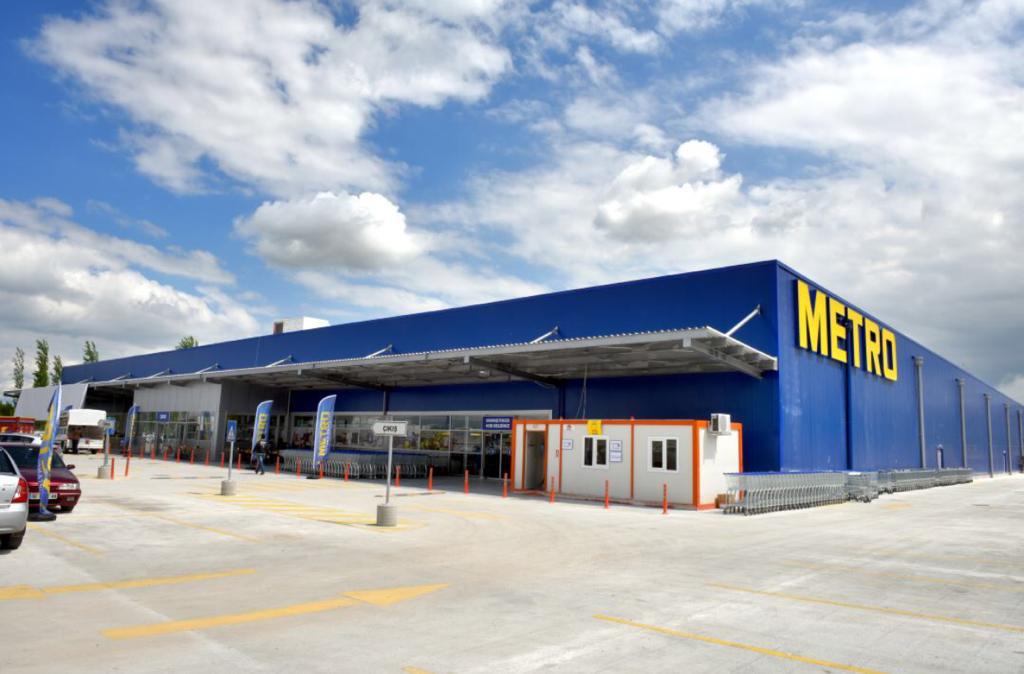
Outside Metro Store(Not In India)
What issue do you see Metro would love to expand in the auto industry?
We are keener on both car and bike segments. We look to develop more into the interior and exterior car segments. We are focusing on car perfumes and Car Cleaning and a little bit of car furnishing. In the future, we want to give a complete solution to consumers. Right from car lighting, car wipers, covers, lubricants, we are dealing with two top brands in the country followed by Tyres. Tyres we are currently looking for two-wheelers. Based on its result we will be focusing on 4 wheelers. We are already in discussion with few companies on how the business model can be built with Metro and how fitment and service can be given at the individual stores. So, we want to give a complete one-stop solution for our consumers. Hopefully, this will be done in the coming years.
What is the company’s vision in the near future?
We are very clear and focused on B2B Business. We are typically wholesalers and we will be catering to that segment only. We have strong fundamentals in India. Wherever we are present we will dominate 100% of the market. This is our vision. \
Yes, it is a difficult task, but we want to build 100% dominance in whichever region we are so that our consumer never goes unsatisfied.
What about GST? Has GST helped Metro or a negative impact?
GST has simplified the processes in the country. Definitely it has helped everyone to channel and organize their business. Overall it has given a significant positive impact. In the following days also, we can see much better growth in the industry due to GST.
It has standardized the rates of products which was earlier selling at a different rate at a different city. Pan India rates have standardized and better pricing for consumers. It has given more power to retailers
Overall there is a positive impact of GST in Indian markets. In the coming years, it will definitely allow businesses to grow further
Has GST increased Metro’s consumer base also?
Yes, Metro’s consumer base has grown pretty much in three years and we are expecting much higher growth. Many consumers will enroll for GST so we are looking forward to adding more consumers to our counters year on year. It will give a much larger boost in terms of getting more customers.
What are the major challenges you foresee to achieve the goals and taking the company to the next level?
The major challenge is competition. The competition will always be there in any business. You must find the right strategy and build on it to grow your business. There are many challenges in different categories. Every category has to be dealt with certain strategy so that we can build our business to the next level. The major challenge which offline retailers are facing is online. But the reality is that Online will always be there in the Indian Market and it only helps offline retailers to improve their product lines and improve their strategy and get better sales. Every retailer has to learn from their mistakes and get success year on year.
Will online helps to create visibility of what you sell in the offline stores?
It’s not only about visibility but also about how strategically you are playing in whichever segment you are there and how differently you have built your portfolio into the stores which are not there with your competitor. That makes the difference. As I said earlier, currently offline retailers are trying to enhance their consumer experience within the brick and mortar. And that is the strategy to make their consumers spend more time in the store. Likewise, if you see all categories have a different strategy. All put together the success is there.
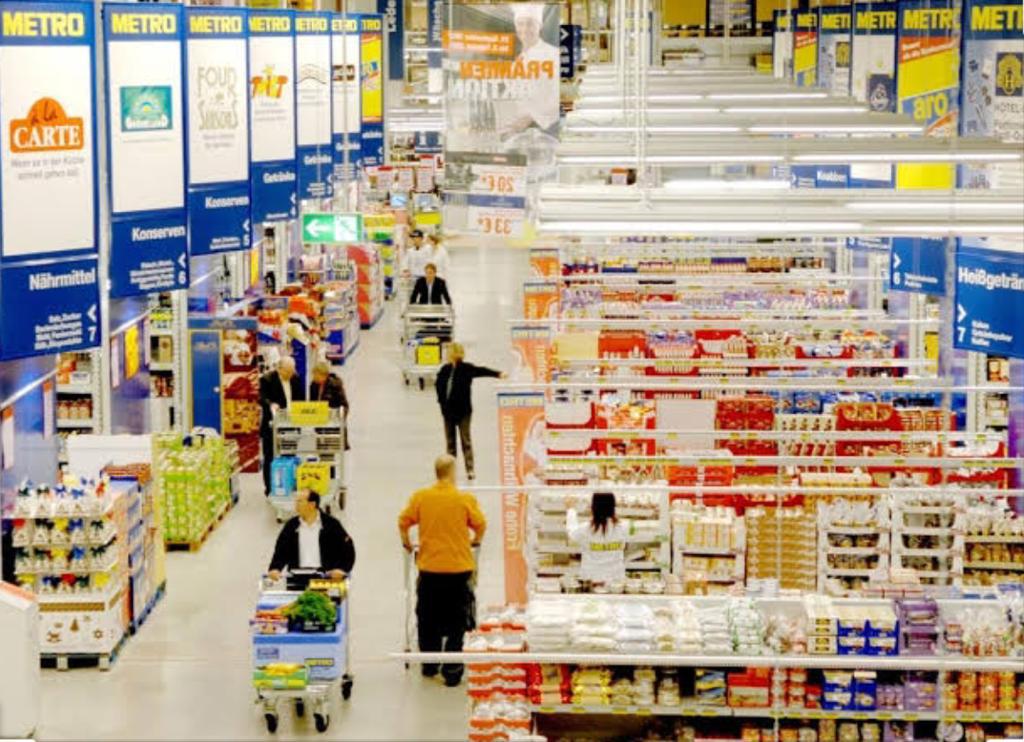
1





